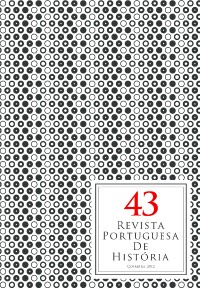Please use this identifier to cite or link to this item:
https://hdl.handle.net/10316.2/28049| DC Field | Value | Language |
|---|---|---|
| dc.contributor.author | Rebelo, Fernando | - |
| dc.date.accessioned | 2014-01-24T10:14:43Z | |
| dc.date.accessioned | 2020-10-05T00:48:49Z | - |
| dc.date.available | 2014-01-24T10:14:43Z | |
| dc.date.available | 2020-10-05T00:48:49Z | - |
| dc.date.issued | 2012 | - |
| dc.identifier.issn | 0870-4147 | - |
| dc.identifier.uri | https://hdl.handle.net/10316.2/28049 | - |
| dc.description.abstract | Há, indubitavelmente, uma forte ligação entre o Rio Mondego e a cidade de Coimbra. No entanto, quando o Homem se instalou na colina geminada onde depois viria a nascer a cidade, talvez, na sua base, o rio desaguasse numa ria, semelhante às muitas que existiram nas costas europeias, na sequência da transgressão flandriana, e que, no tempo de Afonso Henriques, ainda se poderia comparar com a que Amorim Girão (1922) reconstituiu para o século XI na área de Aveiro. A pouco e pouco, a ria do Mondego foi sendo entulhada por materiais rochosos transportados pelo rio, acabando por desaparecer. A partir de finais do século XIII, as cheias começaram a originar inundações de consequências graves para a ocupação humana, não só pela água transbordada, mas principalmente pelas areias e cascalhos depositados. Desde então, o Homem teve de se adaptar às cheias e inundações, ou a reagir contra elas, com obras, tanto na cidade de Coimbra, como no vale, a montante, ou nas vilas e aldeias da planície aluvial, a jusante (Fernandes Martins, 1940). | por |
| dc.description.abstract | There is undoubtedly a strong connection between the river Mondego and Coimbra. However, when the human population settled on the twin hill where later the city would be raised, perhaps, at the hill’s base, the river discharged into a “ria” similar to many that existed in the European coasts, in the wake of the flandrian transgression, and which, in the time of Afonso Henriques, could still be compared to the one outlined by Amorim Girão for the area of Aveiro. Mondego’s “ria”, however, was gradually obstructed by rocky materials carried by the river and disappeared. From the end of the 13th century on, high waters began to cause floods with serious consequences for human occupation, not only because of the overflowed water, but also and mainly by the sedimentation of sands and gravel. Since then, the population had to adapt to floods and inundations or react against them with building works, both in the city of Coimbra and in the valley upstream, or in small towns and villages of alluvial plain downstream. | eng |
| dc.language.iso | por | - |
| dc.publisher | Faculdade de Letras da Universidade de Coimbra, Instituto de História Económica e Social | - |
| dc.subject | Coimbra | eng |
| dc.subject | Mondego | eng |
| dc.subject | “Rias” | eng |
| dc.subject | High waters | eng |
| dc.subject | Floods | eng |
| dc.subject | Coimbra | por |
| dc.subject | Mondego | por |
| dc.subject | Rias | por |
| dc.subject | Cheias | por |
| dc.subject | Inundações | por |
| dc.title | Rio Mondego e Coimbra: uma longa e ambivalente ligação | por |
| dc.type | article | - |
| uc.publication.collection | Revista Portuguesa de História nº 43 | - |
| uc.publication.firstPage | 149 | - |
| uc.publication.issue | 43 | - |
| uc.publication.lastPage | 158 | - |
| uc.publication.location | Coimbra | - |
| uc.publication.journalTitle | Revista Portuguesa de História | - |
| dc.identifier.doi | 10.14195/0870-4147_43_7 | - |
| uc.publication.orderno | 9 | - |
| uc.publication.area | Artes e Humanidades | - |
| uc.publication.manifest | https://dl.uc.pt/json/iiif/10316.2/28049/269815/manifest?manifest=/json/iiif/10316.2/28049/269815/manifest | - |
| uc.publication.thumbnail | https://dl.uc.pt/retrieve/12159817 | - |
| item.grantfulltext | open | - |
| item.fulltext | With Fulltext | - |
| Appears in Collections: | Revista Portuguesa de História | |
Files in This Item:
| File | Description | Size | Format | |
|---|---|---|---|---|
| rph43_artigo6.pdf | 241.4 kB | Adobe PDF |  |
Items in DSpace are protected by copyright, with all rights reserved, unless otherwise indicated.
